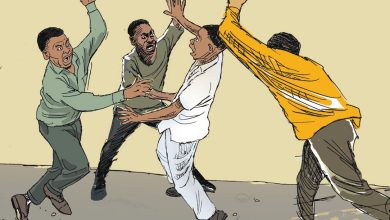Rape cases illogical without forensic proof
Sooner later, one discovers that victims of rape and defilement are let down by trivial synchronization errors in the justice system that could have long been resolved if only the systems’ key stakeholders could snooze less.
Last week’s acquittal of a Mulanje man accused of defiling and gravely injuring a 10-year-old girl’s private parts ought to serve as a reminder of the glaring evidence gaps in which justice stumbles, betraying already hurt victims who feel cheated by the very system entrusted with the responsibility of fighting for fairness.
While narrated evidence from the poor girl implicated the suspect in every sense, State prosecutors once again failed to provide an undisputable link between the child’s predicament and the alleged perpetrator’s involvement in the matter leaving the magistrate with no choice but to let the suspect walk free.
The few times I have been in court during rape or defilement cases’ hearing where suspects plead not guilty, ill-prepared prosecutors manage—through medical examination reports—to prove that at least the victim experienced sexual contact, apart from providing information regarding the circumstances of the incident.
However, most of the prosecutors fail to efficiently address the “who” question in attempting to pin down the person responsible for the crime, yet this is the most important aspect that technically connects the victim and perpetrator beyond their words of mouth.
When a sexual assault crime is committed, as was the case with the Mulanje girl, the offender’s DNA was obviously left on the victim’s body or clothing or at the crime scene in form of semen or blood. If such samples are collected, they can then be compared to suspects DNA obtained from their blood, semen, hair or other similar sources, thus providing an undisputable connection between the two.
But this never happens in Malawi where court evidence in such cases just revolves around the victim’s word against the suspect’ and a medical report that only confirms that the victim indeed had sexual contact with a man whose unquestionable identification is far-fetched.
The lack of scientific evidence in the cases is compounded by the incompetence of some police prosecutors who look and act confused in the court rooms to the disappointment of justice seekers. The court scenario is even more pathetic when the police prosecutors have to wrestle with well-trained lawyers hired by some suspects. The disparity in knowledge is too obvious such that the lost battle for the victims can be foretold long before a case is concluded.
In a country where rape and defilement cases seem to be on the increase—with 2010 statistics indicating that one in four children under the age of 16 have reported forced sex—it is only imperative that law enforcers look critically at the issues of forensic evidence in these cases, otherwise perpetrators of these crimes will continue walking free while their victims suffer life-long effects of their actions.




